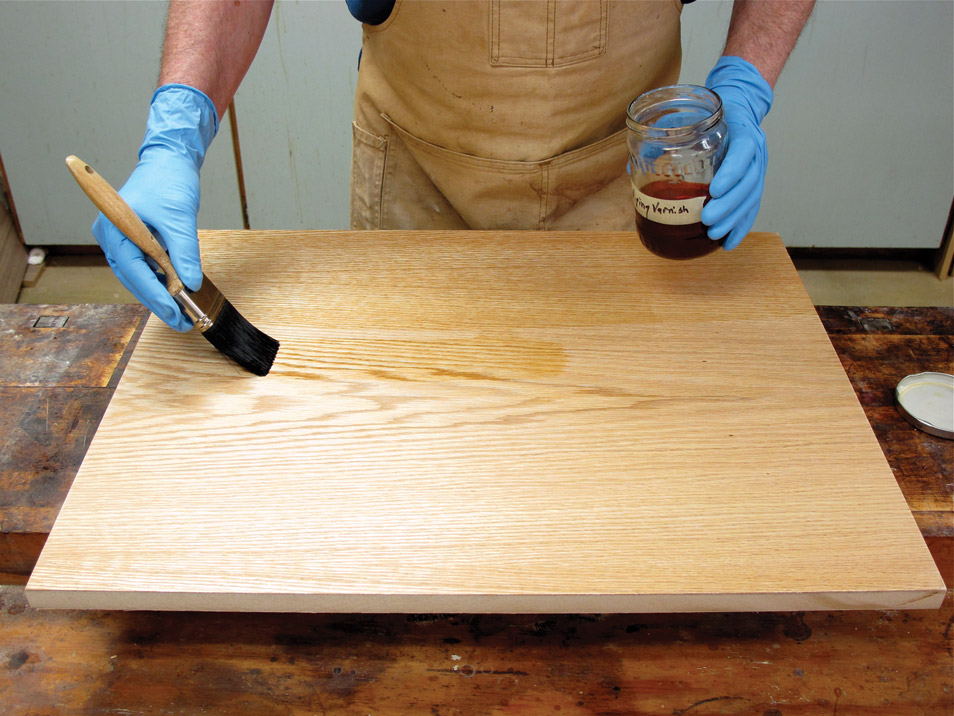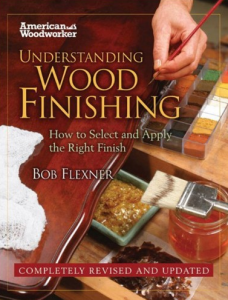We may receive a commission when you use our affiliate links. However, this does not impact our recommendations.
 The time and cost of materials you invest in any woodworking project can make the final finishing stage a nerve-racking one. You want to get it right, and there are a lot of wild ideas out there concerning finishing. Below you’ll find a few common wood finishing myths and the actual facts excerpted from Bob Flexner’s expert text on the subject, “Understanding Wood Finishing.”
The time and cost of materials you invest in any woodworking project can make the final finishing stage a nerve-racking one. You want to get it right, and there are a lot of wild ideas out there concerning finishing. Below you’ll find a few common wood finishing myths and the actual facts excerpted from Bob Flexner’s expert text on the subject, “Understanding Wood Finishing.”
Myth:
Finishing both sides of wood prevents or at least reduces warping.
Fact:
A finish will slow but not prevent or reduce warping caused by wood shrinking more tangentially (around its growth rings) than radially (perpendicular to its growth rings). Moisture vapor will still work its way through the finish and cause the same degree of warping. Warping caused by compression shrinkage on the side more exposed to wetting and drying (usually the top side) won’t be hindered at all. This is the reason tabletops exposed to spills and water from wiping with damp cloths should be refinished whenever the finish begins to deteriorate or wear badly.
Myth:
You get better results if you sand to #440 or finer grit.
Fact:
Before you apply the finish, wood sanded to #400-grit will have a higher gloss than wood sanded to, say, #180-grit, because #400-grit polishes more than #180-grit. But after you apply any film finish, you won’t be able to see or feel any difference. Try it! You may save yourself countless hours of sanding in the future.
Myth:
You get the best results brushing slowly.
Fact:
No matter what you do or did for a living, you aren’t (weren’t) being paid to do it slowly. What would be your reaction if a painter you hired to paint by the hour to paint your house brushed a foot every 8 seconds (an instruction I’ve seen several times in print)? Always brush rapidly while maintaining control.
Myth:
You should first brush across the grain and then with the grain.
Fact:
You can do this with slow-curing finishes, such as a varnish. You may achieve a coat that is a little more even in thickness, but probably not enough to see.
Myth:
The longer you leave a stain on the wood, the deeper the stain will soak into the wood and the darker the wood will become.
Fact:
It is true that wood becomes darker if you leave a stain on longer, but it’s not because the stain has soaked deeper. It’s because some of the thinner in the stain has evaporated, and this has increased the ratio of colorant to liquid. Higher concentrations of colorant produce darker colors.
Myth:
You should always apply and wipe off stain with the grain.
Fact:
As long as you wipe off all the excess stain, it doesn’t matter in what direction you apply the stain. (I usually wipe the stain rapidly into the wood in all directions with a soaked cloth.) Nor does it matter in what direction you wipe the stain off. It is important only that you make a final pass with the grain, so that any streaks you might unintentionally leave will be less noticeable.
 For more great finishing instruction and advice, check out “Understanding Wood Finishing” by Bob Flexner, available now at shopwoodworking.com or from your favorite bookseller.
For more great finishing instruction and advice, check out “Understanding Wood Finishing” by Bob Flexner, available now at shopwoodworking.com or from your favorite bookseller.
Here are some supplies and tools we find essential in our everyday work around the shop. We may receive a commission from sales referred by our links; however, we have carefully selected these products for their usefulness and quality.









You’ve basically said all of these things are true to an extent, you’re basically quibbling.
A bit DITTO on all counts. In my experience all of you points are well said and true as can be. It’s a relief to read your words taking the mystery and BS out of wood finishing. Thank you thank you thank you.